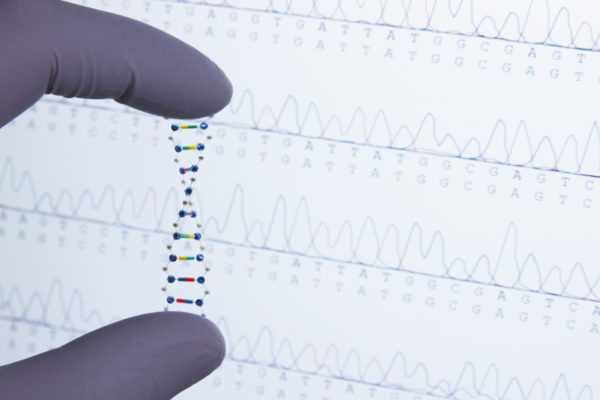
Presented by: Mansoor Raza Mirza, MD, Nordic Society of Gynecological Oncology – Clinical Trial Unit (NSGO-CTU) & Rigshospitalet Copenhagen University Hospital, Copenhagen, Denmark
In preclinical models, tumour hypoxia induced by anti-angiogenic agents results in homologous recombination deficiency. This forms the basis for the hypothesis that anti-angiogenic agents might have the potential to enhance the efficacy of PARP inhibitors. The AVANOVA2 trial was the first randomised trial that puts this hypothesis to the test. In this trial, a chemotherapy-free regimen of niraparib and bevacizumab was compared to niraparib alone in patients with recurrent ovarian cancer. Compared with niraparib alone, the combination regimen resulted in a significant improvement in the progression-free survival (PFS). In addition to this, several other efficacy endpoints were also significantly improved with the niraparib-bevacizumab combination, including the time to the first subsequent therapy, the time to the second progression or death and the time to second subsequent therapy. As such, when confirmed in a phase III trial, these findings have the potential to induce a shift in the treatment paradigm for women with recurrent platinum-sensitive ovarian cancer.
Platinum-based chemotherapy is the current standard of care for patients with platinum-sensitive recurrent ovarian cancer (PSROC). Unfortunately, its use is limited by cumulative toxicity. Previous results of the phase III NOVA trial demonstrated that maintenance therapy with niraparib after treatment with platinum-based chemotherapy significantly improved the PFS, without affecting the sensitivity to subsequent treatment lines. In addition, the single-arm QUADRA trial demonstrated that niraparib alone is active as definitive treatment for relapsed ovarian cancer. The phase II AVANOVA2 randomised trial previously demonstrated a significant PFS improvement with a chemotherapy-free regimen of niraparib and bevacizumab compared to niraparib alone in women with PSROC. This benefit was seen regardless of the homologous recombination deficiency (HRD) status, the duration of the chemotherapy-free interval and the number of previous lines of therapy. At ASCO 2020, overall survival (OS) as well as other efficacy and safety endpoints were presented.
AVANOVA2 enrolled a total of 97 patients with high-grade serous/endometrioid PSROC with any number of previous lines of therapies. All patients had measurable/evaluable disease and prior use of bevacizumab was permitted. Patients were randomly allocated (1:1) to niraparib 300 mg, once daily on days 1-21 or niraparib 300 mg, once daily on days 1-21 in combination with bevacizumab 15 mg/kg, once every three weeks. All women were stratified based on HRD status (positive versus negative) and chemotherapy-free interval (6-12 months versus more than 12 months). Patients remained on treatment until disease progression or unacceptable toxicity.
Of 97 enrolled patients, 49 were randomised to niraparib monotherapy and 48 received the chemotherapy-free combination. Updated PFS analysis after a median follow-up of 24.7 months in the intention to treat population indicated that the combined treatment significantly improved the PFS compared to niraparib alone, with a median PFS of 12.5 and 5.5 months, respectively (adjusted HR [95%CI]: 0.34 [0.21-0.55]; p<0.0001). The time to the first subsequent therapy (TFST) almost doubled from 7.2 months with niraparib alone, to 14.3 months with the niraparib-bevacizumab combination (HR [95%CI]: 0.45 [0.29-0.70], p=0.0004). Also the time to second progression or death (PFS2) was clearly in favour of the niraparib-bevacizumab combination with a median of 20.5 months versus 15.7 months with niraparib alone (HR [95%CI]: 0.56 [0.35-0.89], p=0.015). The time to second subsequent therapy (TSST) for patients treated with niraparib plus bevacizumab was reported at 21.8 months, which is significantly longer than the 17.3 months seen in patients treated with niraparib alone (HR [95%CI]: 0.56 [0.36-0.89], p=0.014). Finally, the OS (at 52% event maturity) was numerically prolonged from 27.8 months in the niraparib monotherapy arm to 29.4 months in the combination arm. This difference did not meet the criteria for statistical significance (HR [95%CI]: 0.75[0.44-1.28], p=0.30).
There was no difference in treatment-emergent grade 3/4 adverse events between both arms, except for a higher rate of hypertension (22.9% versus 0%) and neutropenia (8.3% versus 2.0%) with the combination therapy. Patient-reported outcomes with regard to health status and quality of life over time were similar with both treatments.
NSGO-AVANOVA2 is the first randomised trial to evaluate a chemotherapy-free combination of two established agents, niraparib and bevacizumab, approved for the use in recurrent ovarian cancer. Compared with niraparib alone, the combination of niraparib and bevacizumab as definitive treatment for ovarian cancer significantly improved PFS, TFST, PFS2 and TSST. The combination of niraparib and bevacizumab was well tolerated and no detrimental effect on quality of life was observed. These results thus support the rationale behind a randomised phase III trial to change the current standard-of-care therapy.
Reference
Mirza MR, Nyvang GB, Lund B, et al. Final survival analysis of NSGO-AVANOVA2/ENGOT-OV24: Combination of niraparib and bevacizumab versus niraparib alone as treatment of recurrent platinum-sensitive ovarian cancer—A randomized controlled chemotherapy-free study. Presented at ASCO 2020; Abstract 6012.